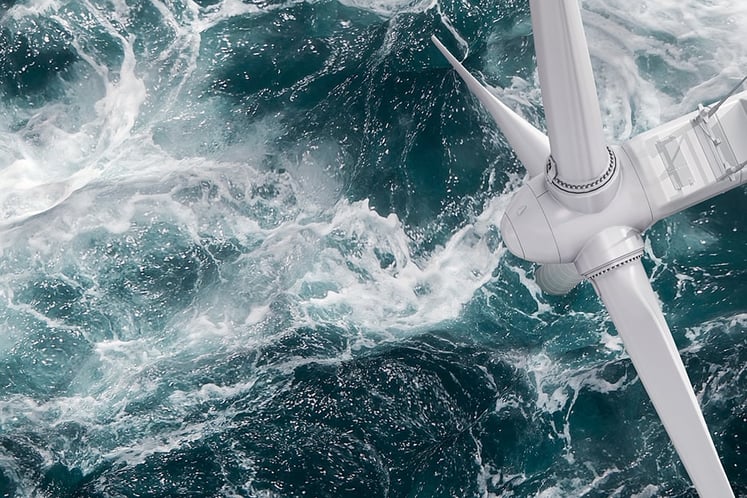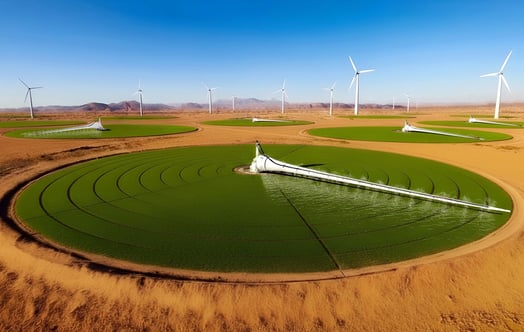The human urge to explore the far corners of the globe is as old as time itself, but our wanderlust comes at a significant environmental cost. From electric planes to biofuels, hydrogen, and electrofuels, the aviation industry is now working to chart a more sustainable path forward.

An Airbus vision of a Blended-Wing Body (BWB) aircraft where the wide interior opens up options for hydrogen storage and distribution. Copyright: Airbus.
Aviation stands for around 2.5 per cent of the world’s CO2 emissions. And except for a deep dip in the curve during the COVID-19 pandemic, emissions are growing.
Aviation along with some other sectors such as shipping and steel are seen as especially hard to decarbonise, or hard-to-abate. But there is some promising progress, both in terms of technical advancements and new regulatory frameworks.

“What we are seeing now is that fossil-free electricity can play a very important role in cutting emissions also in the hard-to-abate sectors, and we need to decarbonise also these sectors, because such a large chunk of emissions come from those,” says Mikael Nordlander, Director Industry Decarbonisation at Vattenfall.
To make flight fossil-free, there are four main pathways: Hydrogen, biofuels, electrofuels and batteries.
The one most readily available is biofuels; however, its emission reducing capacity can vary depending on the feedstock and how it is made. Therefore, Vattenfall and its First Movers Coalition partners are committed to supporting biofuels that reduce greenhouse gas emissions by 85 per cent or more, compared to fossil-based kerosene.
Feedstocks like straw or used cooking oil, that do not compete with food production, are the most sustainable choices. The problem: Whereas biofuels can be parts of a fuel blend, and could work as part of the solution, there just is not enough biomass that can be produced sustainably to replace fossil fuels.
Batteries
Another option is battery-powered electric flight. The Swedish island of Gotland, with an airport around 200 kilometres from the capital Stockholm, wants to have the country’s first scheduled electric flight connection established already in 2028. That is also when Sweden’s Heart Aerospace plans to have its 30-seat ES-30 aircraft flying. Very fitting, it is supposed to have an all-electric range of 200 km when first operational.
That is the main limitation for battery-powered aircraft though. They will work fine on short-haul light flights, but for longer and heavier flights, other energy sources are needed.
Enter hydrogen and electrofuels.
Not yet commercially available as aviation fuels, they are seen as main options for long-haul flights going forward, possibly combined with biofuels when it comes to electrofuels.
There are several ways of producing hydrogen, and even more ways of producing electrofuels. But basically, fossil-free hydrogen is produced by splitting water by electrolysis using fossil-free electricity. The hydrogen can then be used in gas turbines or by letting fuel cells convert the chemical energy back into electricity.
Already in 1989, Russia’s Tupolev manufactured the first hydrogen aircraft which ran on gaseous hydrogen. But hydrogen can also be cooled down to liquid form at −253 °C or lower, for it to take up less space.
One of hydrogen’s main challenges is that new infrastructure is needed, both when it comes to airplanes, but also for storage facilities and refueling stations etcetera. Vattenfall is working in a cooperation with aircraft manufacturer Airbus and others on hydrogen infrastructure at airports in Sweden and Norway.
While hydrogen has high energy density compared to its weight, it is low compared to volume, also in liquid form, meaning the same amount of energy takes up more space than other fuels. Airbus for example is therefore looking into storing hydrogen in huge wings as one option.
The process of developing and getting a new type of airplane is rather long, and hydrogen airplanes are not expected to cross our skies within the next decade. But if hydrogen is combined with captured carbon, you get liquid electrofuels.
The captured carbon could for example come from a district heating facility that runs on forestry by-products such as snags, tops and branches, instead of it being released into the air. The carbon then released from the airplane will over time be captured again by new growing trees. Also, CO2 captured when making biogas or ethanol could be used.
Another option is direct air capture, or sucking CO2 directly from the air. Then the cycle is closed almost immediately. But the lower the concentration of carbon dioxide, the more energy is needed to extract it, and the higher the cost. The CO2 level in the air is currently at around 420 PPM, or 0.042 per cent. Higher than ever and rising, but still a very low share compared to the other processes.
The upside of electrofuels is big. If you get the recipe right, you can mix it with biofuels of fossil-based, traditional, kerosene. Or even run on electrofuels alone without making any changes to the aircraft or the infrastructure. As with hydrogen, you can also produce more of it when renewable energy sources such as wind and solar produce the most and prices are lower.
Electrofuels possible around 2030
“I think we will see the first planes running on electrofuels – at least in tests – flying already around 2030,” says Mikael Nordlander.
Electrofuels and other fossil-free alternatives also recently got an important regulatory boost, when the EU last year adopted the RefuelEU aviation initiative. The regulation calls for a minimum share of “sustainable aviation fuels” (SAF), which includes certified biofuels, from 2025 and, from 2030, a minimum share of synthetic fuels, or electrofuels. Both shares increase progressively until 2050. Fuel suppliers will have to incorporate 2 per cent SAF in 2025, 6 per cent in 2030 and 70 per cent in 2050. From 2030, 1,2 per cent of fuels must also be synthetic fuels, rising to 35 per cent in 2050.
The EU is also phasing out free allowances for the aviation sector in the emissions trading system EU ETS by 2026.
All these solutions cost more than fossil-based kerosene however, and fuel costs represent around 20–30 per cent of airlines’ total expenditure.
But if costs are spread evenly over all passengers, such as it will under the EU rules with minimum blend-ins, prices do not need to rise that much, and over time, prices will go down, says Mikael Nordlander.
But most of all, as it is now, fossil-based fuels are heavily subsidised since they are not paying for the damage they are making, he says.
“There are studies that show about 1/5 of the global economy is set to be destroyed due to climate damage by 2050 if we continue like now. Fossil fuels are not picking up the bill.”

Subscribe to the newsletter THE EDIT
THE EDIT is Vattenfall's new monthly newsletter. Each issue highlights a new burning issue from the world of sustainable energy and fossil freedom.



